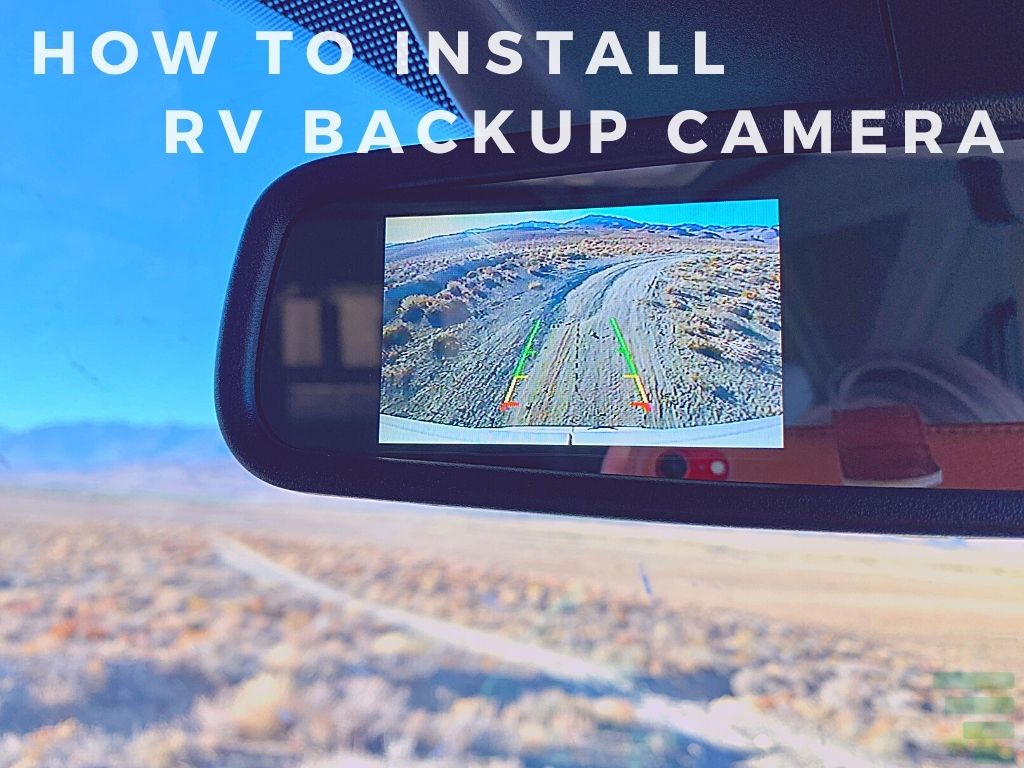How To Install RV Backup Camera

A backup camera is a great idea for anyone who owns an RV. This setup will allow you to see what’s behind your vehicle while reversing, which can be especially helpful when backing into tight spaces. There are many different models available on the market today, but they all have one thing in common: installation is required! In this post, we’ll go over some of the most popular types of backup cameras and how to install them yourself!
Types of Backup Cameras
There are 2 types of backup cameras on the market right now: Wireless backup camera and wired backup camera.
Wireless Backup Cameras
These cameras are the most popular because they’re easy to install and don’t require any hardwiring. The only thing that’s required is a power source for your camera, which can be provided by either an electrical outlet or battery pack.
Find out: Wireless Vs Wired Backup Camera for RV
Wireless cameras come in two formats: digital and analog. Analog models are generally less expensive, but their signals are weaker than digital cameras due to frequency sharing with other devices. Frequency interference can often make images blurry or unusable, too. Digital cameras are the premium wireless backup option because of their stronger signal and clearer images.
Wired Backup Cameras
This type of backup camera requires the installation of a hardwiring kit. The installation process is more complicated because you’ll have to deal with running wires and drilling holes, but it’s the best option for larger vehicles like RV’s.
How To Install a Wireless Backup Camera
Wireless backup cameras are the easiest type of camera to install so we’re going to cover that first! There are some tools required to do this task:
Wireless Backup Camera Tools Required
- Drill and bits
- Rotary saw or jigsaw with metal cutting blade
- Wire strippers and crimpers
At the back of your vehicle, remove any items blocking access to where you’ll be installing the camera. Set up a work area that is well lit so it’s easier to see what you’re doing.
Strip the wires on your new camera and crimp them onto a two-wire cable that is long enough to reach from where you’ll be installing it, out of the way but near an electrical outlet in case there’s not one in close proximity to where you are drilling holes for your backup camera.
Drill at least two holes in the metal plate that will be mounted behind your vehicle. Drill at least one hole for the cable to go through and another larger hole where you’ll insert a camera mount.
Insert bolts into your chosen mounting location, making sure they are long enough so there’s room for them both on either side of the back bumper.
Then, we come to the next step of attaching the camera mount to these bolts.
Next, attach a metal plate onto this location that will be mounted behind your vehicle by drilling at least two holes and inserting nuts.
Then, connect the power cable of the camera to a 12-volt power source.
Clip on the camera mount to a carabiner, and thread them through one of your drilled holes in the metal plate that will be mounted behind your vehicle.
Now attach an extra wire to this for powering up the backup camera later by attaching it with a nut and bolt combo onto another hole you have drilled.
Finally, it’s time for testing. Put your RV in reverse to see if the backup camera works.
How To Install a Wired Backup Camera
Wired backup camera installation is simple and easy as long as you have the right tools.
Tools Required:
- Power drill
- 3/4″ drill bit
- Sealant
First, mark the place where the camera will be mounted. We recommend mounting the camera as close to the license plate as possible.
Find out: The Best RV Backup Camera!
Now, drill a hole at those markings and insert the power wire through it. You should also sealant this opening with silicone or another non-conductive sealant/adhesive to prevent water from entering your vehicle’s electrical system.
- Guide the cable all the way to the front of your RV. This could be challenging and takes time.
- Mount the monitor to your preferred place.
- The positive cable is usually red so it can be easily identified.
- Leave the cable in place and drill another hole on top of it, this time for the camera wire which should be green.
- Connect wires as per instructions to the power source.
- The last step is testing if the backup camera works.
Final Words
How to install RV backup camera is not that difficult if you have the necessary tools and some basic wiring skills. The backup camera will help you when you are backing up your RV as it will provide a clear view of everything behind the vehicle.
Further Reading:
- Backup cameras now required in new cars in the US – CNBC
- Federal Motor Vehicle Safety Standard No. 111, Rear Visibility
source https://automotivegearz.com/how-to-install-rv-backup-camera/
Comments
Post a Comment